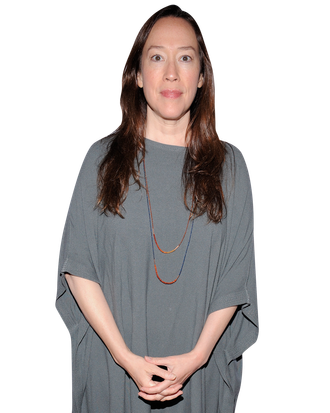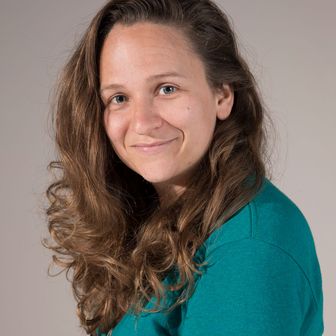
Karyn Kusama has done a lot throughout her career to put women in front. Her directorial debut, Girlfight, starred Michelle Rodriguez as a trailblazing female boxer. Her follow-up brought the animated assassin Aeon Flux to life with Charlize Theron years before we could even yell about the dearth of female superheroes. In 2009 there was the horror comedy Jennifer’s Body, in which the central relationship was the (mostly) platonic love story between two high-school best friends. After a seven-year absence, Kusama re-emerged last year to turn in The Invitation. It was quietly one of the best horror movies of 2016, and reaffirmed her as one of the most exciting women in genre cinema.
Fortunately we won’t have to wait the better part of a decade for Kusama’s next feature, since she signed on to direct a new horror film called Breed last fall. And for right now, we have the horror anthology XX, which features vignettes from St. Vincent, Kusama, Jovanka Vuckovic, and Roxanne Benjamin. Kusama’s entry is called “Her Only Living Son,” and it’s about a mother who’s lived her life on the run to protect her boy from an unknown malevolence, which as luck would have it finally catches up with the pair on his 18th birthday. (Think of it as a kind of speculative continuation of Rosemary’s Baby.) Kusama has been making movies for almost 20 years now, so we spoke with her about the evolution of indie filmmaking since the early aughts, the importance of having women in leadership positions, and why horror and science fiction are cinema’s great hope.
One of the things I wanted to talk to you about most is the breadth of genre material you’ve worked with over the years. I wanted to know what appeals to you about the language implicit in horror and sci-fi. Why is it attractive as a storyteller and a filmmaker?
Well, it’s interesting. I’ve had to sort of consider this question more than once, and I realize that it’s interesting to talk about genre as if it is implicitly a kind of degraded form.
That’s a good point.
When in fact I think what’s really quite amazing about genre is that it’s a wonderful kind of container for a lot of ideas. Sci-fi and horror particularly allow a storyteller to depart from, let’s say, the demands of cinema verité, or kitchen-sink realism, or even just relatable dramas, and can go into areas that are either — in the case of horror — more primally effective, or in the case of sci-fi, more speculative or imaginative. So I just feel like both genres offer so much opportunity for, I want to say, a wilder intellectual landscape in many respects.
I agree, and I feel like with the social climate as tense as it is right now in the States, horror provides what I consider to be the most incisive venue to comment on parts of our culture that are disturbing and uncomfortable.
Absolutely. Completely agree.
So obviously I want to talk about women in cinema, but I don’t want to reduce what you’ve done down to just viewing it through that lens. That said, I’ve been thinking a lot about representation, and even though the horror genre has a very embattled relationship with women, people of color, and the queer community, having the opportunity to empower those demographics in the very amplified context that horror provides feels like a really great opportunity. Is that something you consider?
I probably don’t actively think about it, because I’m sort of feeling the effects of it more. I’m not intellectually imagining that I’m going to strategically place women or people or color or people of various sexual orientations and identifications, but I know how I feel when see Amy Adams essentially save humanity from the brink of catastrophe in Arrival, and I understand the power of those things. And I feel it because I am finally seeing someone represented who feels fresh and who feels closer to me. So I definitely think there is plenty of room to explore the idea of heroic, transformative journeys happening with a much, much wider kind of protagonists. For sure. But for me, I probably just naturally gravitate towards that kind of work, so it doesn’t feel all that strategic to me.
That makes sense. When it’s home, you don’t really think about it. It’s just where you are, and what you do.
Yes.
And so coming together with XX, what was the difference and challenge in working in an anthology format? Just based on the difficulty of editing myself, I’m curious about the unique set of challenges for building character and suspense and empathy in a quick-hit format.
Anthologies tend to be low-budget affairs. I found that to be a challenge, because making films with not a lot of resources is always a challenge. You have to get more sort of elemental with the storytelling. You really do have to focus on how each moment is sort of building emotionally or narratively on the last moment, because you just don’t have that much space to provide all that much story. And in the case of my short I felt like because it was essentially limited to this momentous day, this 18th-birthday structure, by organizing the story around that I could kind of distill some of those ideas. The short form, for those people who can master it — and I am by no means one of them — it is very admirable, because it is really hard to tell stories that can stick with the audience and still be between 5 and 30 minutes long. I think it’s a real challenge.
Yeah, when someone can knock you sideways in just 12 minutes I’m shocked every time.
You would think it would take more time, so it’s really instructive when short films work. They tell us about how we need to sort of be engaged with the character, whether we relate to them or not.
And as far as a collaborative experience goes with these other filmmakers, there’s been a lot more talk lately from women in the industry about what it’s like to work on productions that are majority female. Zoe Lister-Jones talked about that with her movie, Band-Aid, at Sundance, and Jessica Chastain wrote an essay for The Hollywood Reporter about what it was like working with almost all women for The Zookeeper’s Wife. Do you find there is a different working energy when there is a substantial female presence in the professional context?
I think in the times where I’ve been really aware of a lot of women around me — I’m lucky to have had those experiences, for one, but secondly, I think that it’s very important for these environments on film sets to feel like there’s a collaborative spirit in general. I feel like that collaborative setting is more likely to occur among a group of women, but I have definitely found that when leadership roles — whether that’s the director, the writers, the producers, the DP, the other heads of departments, the cast — when there are just a lot of women in those you just feel a sense of very lively discussion and engagement. And I’ve felt that among many wonderful, creative men as well.
I feel that in my own life. There is a different kind of energy when women are in a position of authority that lends itself to that collaborative mentality and spirit.
Absolutely. And I think that’s something that is definitely worth being mindful of, and working towards it, and kind of asking oneself if there is a qualified and highly experienced male candidate in front of me, and highly experienced and qualified female candidate in front of me — but for whatever reason that female candidate has just not been given the break — I think it’s important to ask yourself what drives your decision to hire one over the other. Definitely ask yourself to examine, because what you decide, those decisions have an impact on other people’s trajectories.
I wanted to kick back to what you said about budgets. Your features have been paced out over a good chunk of time, and as such you have been present in the industry for a lot of changes in the film scene, particularly independent films. We’ve seen the decline of the mid-budget indie and the rise of the Duplass-style “available materials” school of filmmaking. There are also so many more distribution platforms to market movies on. You’ve gotten to make some cool, weird stuff with a broad range of budgets, like Aeon Flux and Jennifer’s Body. But do you find now that there is a greater receptiveness for weird stuff with niche platforms available for distribution?
I want to say yes. I want to say there are now more opportunities to see a lot of different kinds of work in both film and TV, but in terms of feature money, I think it remains extremely difficult to make unusual work. I think you really have to be very clear about what ways you are departing from what is familiar, and in what ways you are sort of living within familiar tropes or comforting story lines or situations. I think it’s important to know where you stand, because to me, the money it takes to make most movies — even some of the smaller, presumably kind of collaborative endeavors — I just find it takes a long time to get that money together.
I wanted to ask you, too, about something I’ve been presenting other filmmakers with lately. When I talk to people about horror films I find I either get the response of, “Oh yeah, I’m into it!” Or they say, “Not really. I don’t really like that slasher or torture stuff.” Horror is misunderstood, so how does someone like you, who is an auteur within this genre, convince potential viewers about the genre’s possibilities?
All I have to do is be engaged with the world we live in right now to feel like there’s plenty of literal, real-world horror out there. And we need to figure out ways to interpret that information, and sometimes we need movies that feel more like fables or fairy tales or campfire stories, and those help guide us towards interpreting the reality that we live in. So the genre of horror is really just a way to manage much larger, much more terrifying realities in our daily worlds. And I think it’s worth it to look for the examples of horror outside of the most [prominent ones] — if slasher isn’t your thing, then look for other forms of it, because it’s everywhere. And there’s some really interesting examples of truthful storytelling that come from a very broad and varied genre.


